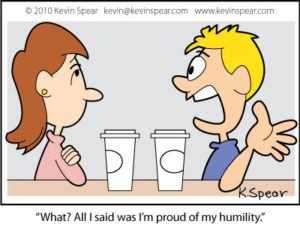Mar 29 2009
Death of a Salesman
As communication continues
to experience convulsively
explosive change, so do the
methodologies we use to sell.
Playwrite Arthur Miller clearly had something else in mind at the time he wrote and titled his classic Death of a Salesman, but there could never be a more apropos expression for what’s happening today, right this very minute, that is about to forever extinguish the “sales process” as we have known it since the day anyone reading this was born.
What, for example, does it suggest to you that even as recent as a year ago, effective sales communication was commonly reported to consist of as much as 87% nonverbal ingredients–gestures, posture, tone of voice, appearance, eye contact, active listening, etc.– and today major companies are talking about the sales process in terms of “digital body language”?
Except for those salespeople who haven’t caught up (or, on) yet (and you surely know who they are and where they breed), business is at the crossroads of revolutionary change, and savvy salespeople spurred on by the blinding speed of technological advances are quick on the heels of entrepreneurs worldwide in leading the way.
With entrepreneurial base-camp entrenchments established, salespeople will be muscling their way up the mountainside and serving the rest of society and the business world as the catalysts of change who will ultimately shake our depressed economy back into place. But this will only happen if those engaged in sales careers are able to fully grasp the dynamics of what’s going on around them.
Entrepreneurs are spirited innovators who start enterprises, and who find the fuel and who get the engines fired up, and who get that initial forward thrust to happen (which is probably the most monumentally difficult and underrated task in all of business), but it is the world’s salespeople who who are responsible for revenues and growth and profits more than any other entity.
Ah, but therein lies the potential problem. Salespeople who don’t see what’s happening, who don’t jump at the chance to instantly and dramatically shift into higher gear, who think they can keep doing the same old things in the same old ways, will fall by the wayside and die. And there won’t be any mercy rules!
The bottom line for salespeople:
- You must adjust your mindset to become more of a marketer and less of a sales representative.
- You must provide prospects/customers with new buying process experiences that are anchored by product/service/idea and market knowledge.
You must rely more heavily on proving performance with demonstration and testing and sampling.
- You must increase your focus on benefits and ways of integrating purchases with existing products/services/ideas.
- You must spend more energy sitting on the same side of the prospect/customer’s problem-solving table and working as a partner instead of as a representative.
HIGH TRUST/credibility, proven performance and database marketing are now the three kings of sales! Are you making it happen, or is it happening to you?
# # #
Good Night and God Bless You!



